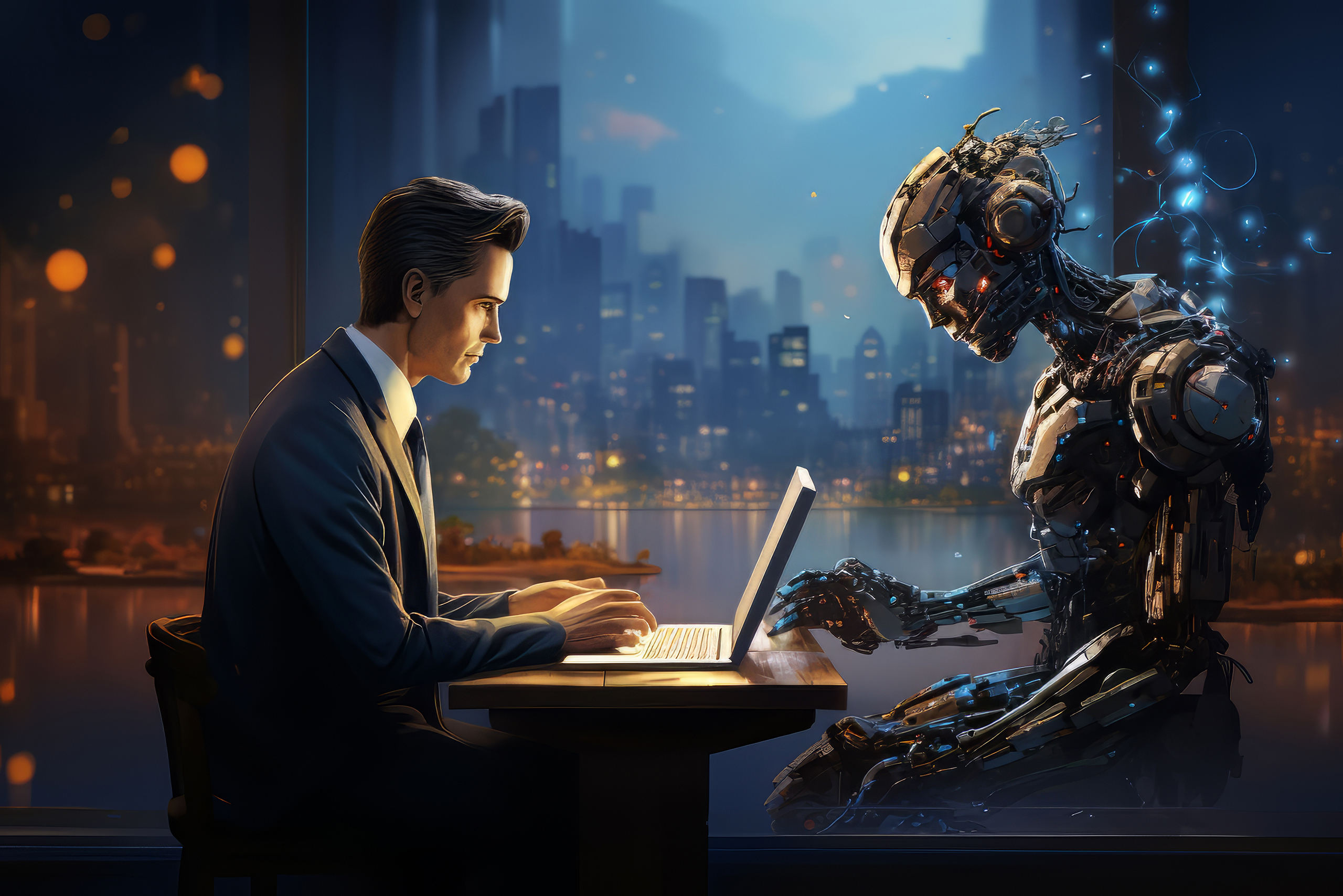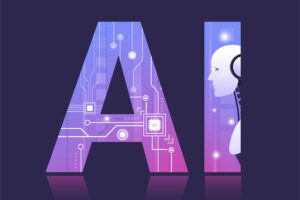Artificial Intelligence isn’t just a distant hum anymore—it’s the pulse driving our days in 2025. What was once sci-fi fodder has become reality, with AI in 2025 weaving itself into our homes, offices, and leisure time across the U.S. and Europe. From virtual assistants 2025 that predict your next move to AI automation erasing the mundane, this tech is transforming everyday life in ways both subtle and profound. Picture a world where AI everyday life means less stress and more freedom—that’s the promise of 2025. So, how exactly is AI in 2025 reshaping our routines? Let’s explore how it’s revolutionizing work, play, and living, one smart step at a time.
AI in 2025 at Work: Transforming Productivity and Creativity
Start your day in 2025, and AI in 2025 is already at work—literally. Whether you’re in a sleek New York high-rise or a cozy Berlin co-working space, transforming everyday life begins with a workplace powered by AI. Your inbox? Sorted. Your schedule? Set. Coffee’s even brewing, thanks to virtual assistants 2025. This isn’t just for tech moguls—it’s how AI everyday life is lifting workers everywhere.
AI Automation: The Efficiency Engine
AI automation is the backbone of this shift. Tasks that once drained hours—data entry, inventory logs, meeting prep—are now handled by AI in 2025 with robotic precision. A 2024 Deloitte report pegged that 65% of U.S. firms and 60% in Europe would adopt AI automation by mid-2025, cutting costs by up to 30%. In a London warehouse, AI automation powers robots sorting packages at lightning speed, freeing staff to strategize instead of sweat.
Customer service? Transformed. AI in 2025 brings chatbots that don’t just respond—they solve. Picture a delayed shipment in Paris: AI automation tracks it, offers a refund, and wraps it up in seconds. Small businesses love this—big-league polish, small-budget price. It’s transforming everyday life by letting humans focus on what machines can’t: empathy, connection, ingenuity.
But there’s a catch. AI automation trims jobs in places like factories—think robotic arms on assembly lines. Yet, AI in 2025 also sparks new roles: system trainers, ethics experts. The key? Adapt, and AI everyday life becomes a partner, not a foe.
Creativity Meets AI in 2025
AI in 2025 doesn’t stop at efficiency—it’s a creative collaborator too. Across industries, professionals are teaming up with AI to supercharge their craft. Graphic designers in San Francisco tweak AI automation-generated layouts, writers in Edinburgh polish AI-drafted articles, and marketers in Stockholm test AI-suggested campaign slogans—all in half the time it once took. A 2024 Creative Industry Report predicted that by 2025, AI in 2025 would boost productivity in creative fields by 35%. It’s not about replacing human ingenuity—it’s about amplifying it.
Take my friend Marco, a photographer in Florence. Last year, he used AI automation to whip up backdrop concepts for a wedding shoot, slashing his prep time from hours to minutes. He still layered in his signature style—AI just gave him the raw material to play with. Some purists scoff, saying it dilutes the craft, but Marco sees it differently: it’s transforming everyday life by cutting the grunt work, leaving room for the art he loves. In AI everyday life, it’s like having a tireless co-creator who’s always ready to brainstorm, day or night.
The catch? It’s not always seamless. Some find the tech intimidating at first—buttons and settings can overwhelm. But once you get the hang of it, AI in 2025 becomes a tool that fits like a glove, handing you shortcuts to brilliance without stealing your soul.
Hybrid Work, AI-Enhanced
Hybrid work is cemented in 2025, and AI in 2025 is the glue holding it together. Virtual meeting assistants—think souped-up versions of Zoom or Teams—don’t just transcribe chatter; they summarize discussions, assign tasks, and predict next steps using virtual assistants 2025. A remote worker in Portland syncing with a team in Madrid leans on AI automation to flag delays, adjust timelines, and keep everyone on track—all without a manager hovering. Tools like Asana or Monday.com, now AI-infused, scan your workload, suggest priorities, and nudge you when you’re veering off course, transforming everyday life for scattered teams across time zones.
Of course, there’s a shadow side. Jobs in traditional sectors—like retail or manual logistics—are shrinking as AI automation takes over. Self-checkout kiosks and delivery drones are relentless proof. But AI in 2025 also births new gigs: AI ethics advisors, system auditors, bot maintainers. My cousin in Dublin retrained last year—went from stocking shelves to debugging AI automation rigs. It’s not easy, but it’s doable. In AI everyday life, the winners are those who grab the upskilling lifeline and see AI as a teammate, not a terminator.
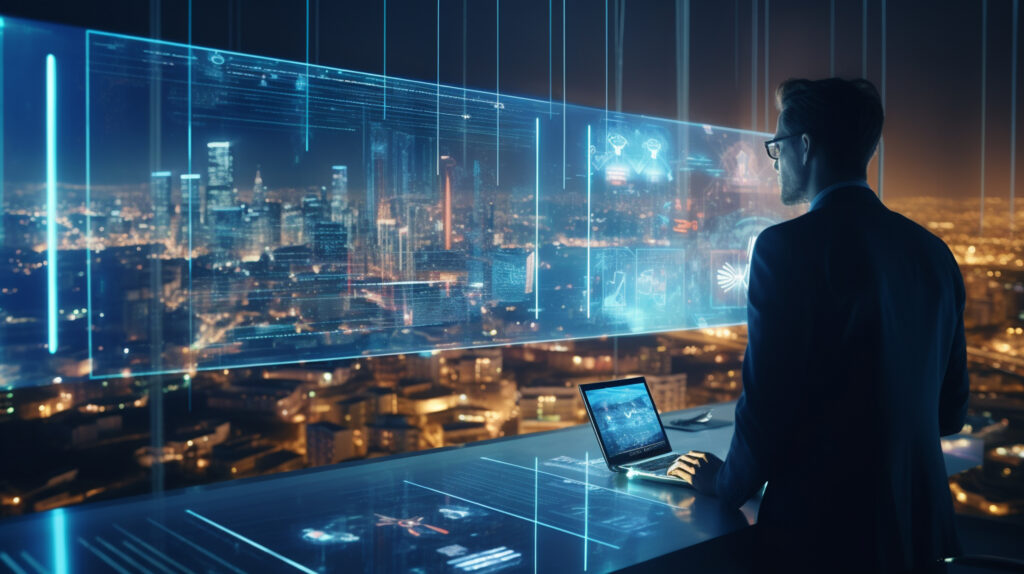
AI in 2025 Entertainment: Personalized Fun Awaits
After work, AI in 2025 turns downtime into a custom adventure. From streaming to gaming, transforming everyday life means entertainment that feels made for you, powered by AI everyday life smarts.
Streaming That Knows You
No more scrolling Netflix for hours. AI in 2025 blends your watch history with real-time cues—mood, weather, habits. A snowy night in Chicago? Virtual assistants 2025 queue a cozy film and a jazz playlist. It’s transforming everyday life by making “what’s next” effortless. Music’s in too—Spotify’s AI automation remixes tracks to match your vibe, whether you’re jogging in Amsterdam or baking in Provence.
I tried it: told my AI I was “relaxed but curious,” and AI in 2025 nailed a podcast playlist. It’s AI everyday life scoring your unwind time perfectly.
Gaming That Evolves With You
Gaming’s where AI in 2025 really flexes its muscles. Big titles like Starfield or FIFA 26 use AI automation to craft worlds that bend to your every move. Non-player characters (NPCs) don’t just follow scripts—they learn. Mess up a stealth mission three times? The AI tweaks the guards’ paths or drops a hint. A player in Barcelona faces a villain who taunts their past flops, while a friend in Toronto gets a totally different showdown—all dynamic, all transforming everyday life into a playground that fights back.
Online gaming’s sharper too. AI in 2025 moderates chats—less toxicity, more teamwork—and matches you with players who fit your style. My brother in Austin swears his AI-tuned Call of Duty squad feels like a real crew, not a random mash-up. In AI everyday life, it’s connection without the clutter, making every match a win—even when you lose.
Creativity for AI
Ever dreamed of directing a blockbuster or dropping a hit single? AI in 2025 hands you the keys. Tools like Runway churn out pro-grade video edits, while Suno spins tunes from thin air—all powered by AI automation. A teen in Manchester crafts a viral TikTok with AI effects, a retiree in Lisbon composes a jazz piece for fun—it’s transforming everyday life by tearing down creative barriers. I messed with an AI music tool last month—plugged in a rough melody, and 20 minutes later, I had a beat I’d actually play for friends.
Critics grumble it’s “cheating” or waters down true art. Fair point—but for most, it’s AI everyday life unlocking a sandbox once reserved for pros. It’s not about replacing talent; it’s about inviting everyone to the party, brush or mic in hand.
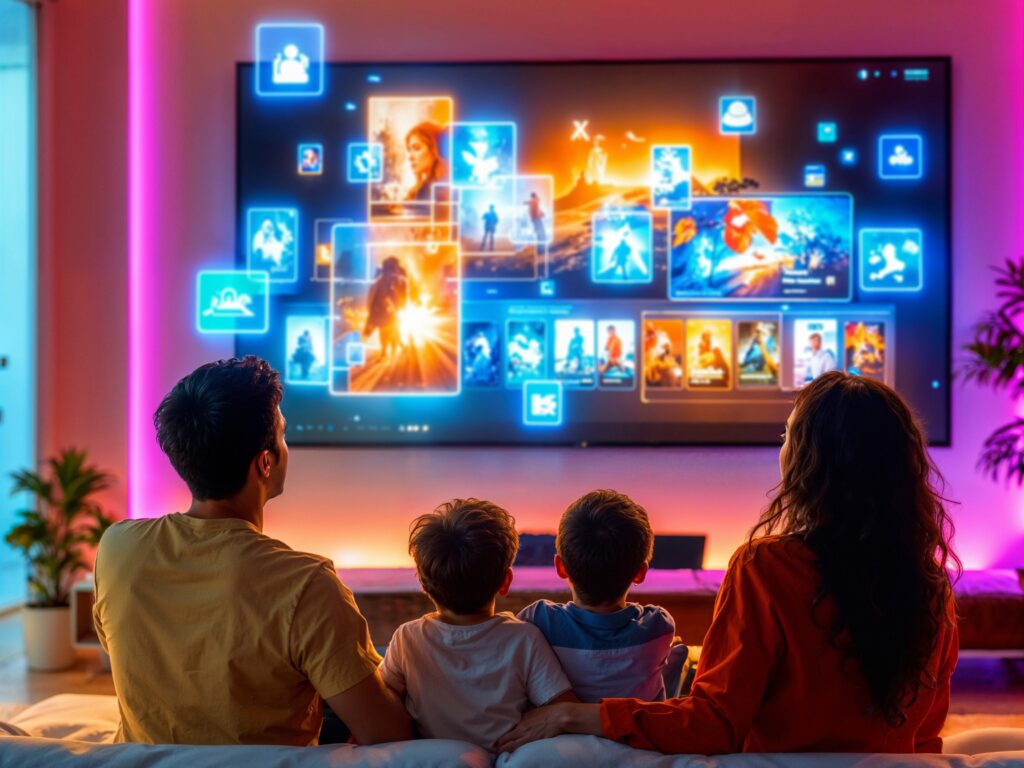
AI in 2025 Daily Life: Automation and Assistants
Beyond work and play, AI in 2025 slips into your home, ironing out life’s wrinkles with AI automation and virtual assistants 2025. It’s transforming everyday life one clever, quiet win at a time—making your days smoother, smarter, and oddly serene.
Virtual Assistants 2025: Your Life’s Co-Pilot
Siri and Alexa? Ancient history. Virtual assistants 2025 don’t just respond—they anticipate. Wake up in Vienna, and AI in 2025 has your blinds adjusted, coffee brewing, and traffic report ready—all before you blink. For families, it’s a lifeline. A mom in Denver rattles off, “Order groceries, book the kids’ dentist, remind me about soccer practice,” and virtual assistants 2025 handle it like pros. In multilingual Brussels, it flips between French and Dutch without missing a beat—AI everyday life keeping chaos at bay.
I saw this up close: my assistant caught a forgotten meeting last week, rescheduled it, and saved me a scramble. It’s not just convenience—it’s transforming everyday life into something less frantic, more fluid. These aren’t gadgets anymore—they’re partners, woven into the fabric of AI everyday life.
Smart Homes, Smarter Living
AI in 2025 turns homes into living, breathing systems. Thermostats learn your routine, cutting energy bills with AI automation—perfect for eco-conscious folks in Oslo or Portland. Security cams analyze footage, flagging a prowler versus a stray cat—my uncle in Galway swears his AI lock stopped a break-in last fall. Rural Ireland’s offline AI gadgets prove AI everyday life thrives without Wi-Fi, bringing smarts to every corner.
Health’s a big focus too. Wearables track your vitals—heart rate, sleep, stress—and nudge you toward balance. My watch pinged me to stretch after a marathon Zoom call last week, even tossing in a calming tune. I didn’t ask for it, but I needed it—classic AI in 2025, transforming everyday life with gentle, unexpected care.
Automation’s Quiet Magic
Self-driving cars cruise through Milan, guided by AI in 2025 that reads traffic better than a seasoned cabbie. At home, your fridge orders milk before you notice it’s gone, your vacuum maps the floor to dodge your dog’s toys—all AI automation at work. Cities like Los Angeles are testing AI traffic grids—synced lights, rerouted cars—that melt rush hour away. I caught a demo last month: gridlock turned to flow in minutes. It’s transforming everyday life with less hassle, more time.
Privacy’s the elephant in the room—virtual assistants 2025 track a lot. But companies, especially in Europe with GDPR, are tightening the reins—opt-outs, clear data rules. My neighbor in Berlin ditched half her smart features and still loves her setup. In AI everyday life, it’s about finding your sweet spot between tech and trust.

The Bigger Picture: AI’s Societal Shift
AI in 2025 isn’t just tweaking your day—it’s rippling through society, transforming everyday life in schools, hospitals, and how we connect.
Education and Health Reimagined
In classrooms from Houston to Helsinki, AI in 2025 powers tutors that adapt to each kid’s pace—struggling with math? It slows down, tries a new angle. Teachers use AI automation to grade papers, spot trends, ease the grind—it’s not perfect, bias can sneak in, but it’s AI everyday life lightening the load. In healthcare, AI in 2025 catches diseases early—25% more accurate than humans alone, per a 2024 Lancet study. Rural clinics in Wales get big-city tools, transforming everyday life one scan at a time.
I visited a hospital last year where AI flagged a patient’s odd X-ray—turned out to be early cancer, caught just in time. That’s AI in 2025 saving lives with quiet precision.
Connection Stays Human
Virtual assistants 2025 host virtual game nights—my crew laughed through one last month, AI picking trivia questions we loved. But we still crave the real stuff—coffee in Paris, hikes in Colorado. AI in 2025 streamlines, optimizes, but it’s the unscripted moments—debates, hugs, a shared sunset—that anchor us in AI everyday life. Tech’s the tool; we’re the heart.
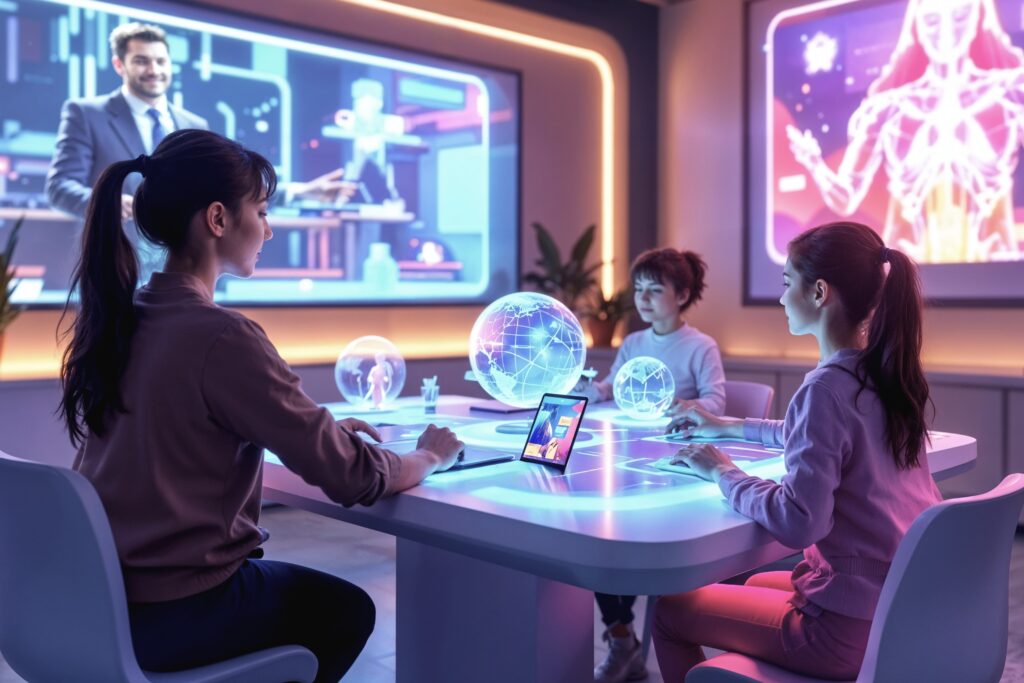
Looking Ahead: AI as Our Co-Pilot
So, where does 2025 leave us? AI in 2025 isn’t here to run the show—it’s here to ride along, transforming everyday life with AI automation and virtual assistants 2025. It’s not flawless—glitches happen, learning curves sting—but it’s real, making AI everyday life smarter, smoother, bolder. Whether you’re coding in Silicon Valley, baking in Tuscany, or parenting in Toronto, AI in 2025 hands you tools to shine.
The road’s still unfolding. By 2026, maybe AI automation will cook your meals or file your taxes (half-kidding). For now, it’s about shaping this tech to fit us—our quirks, our dreams, our lives.

